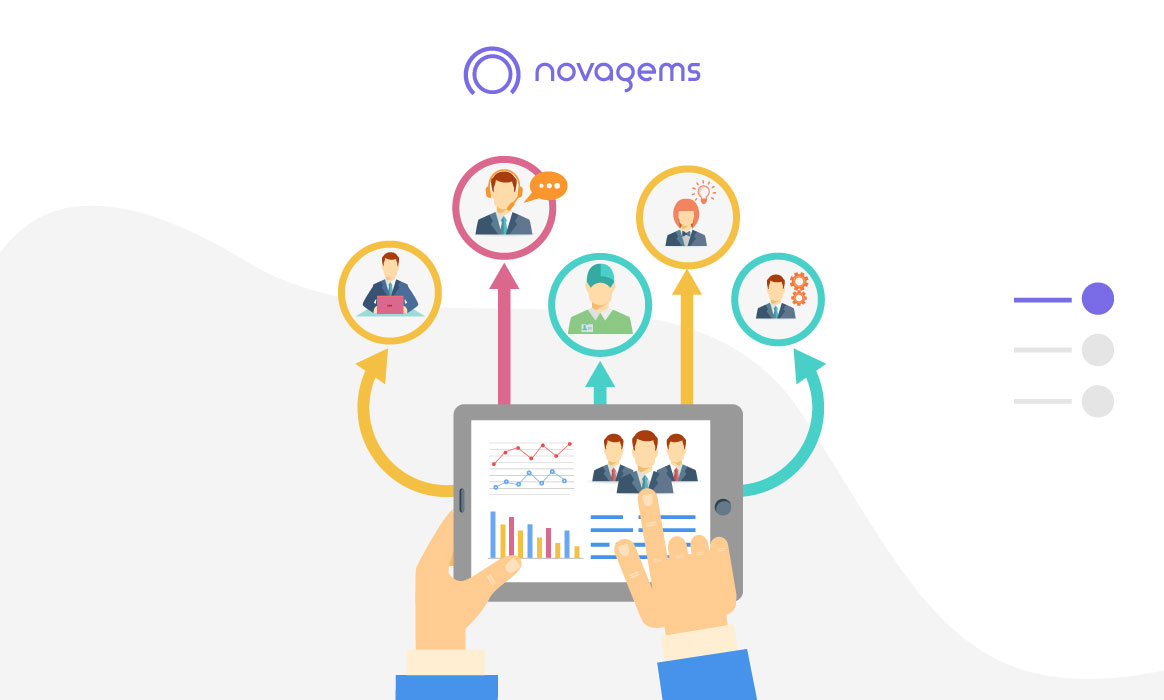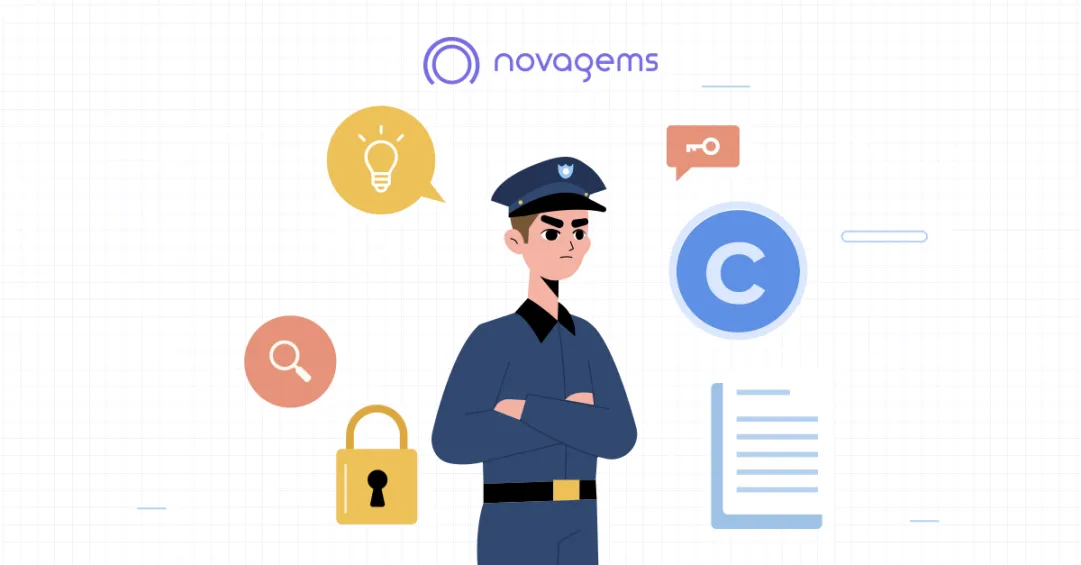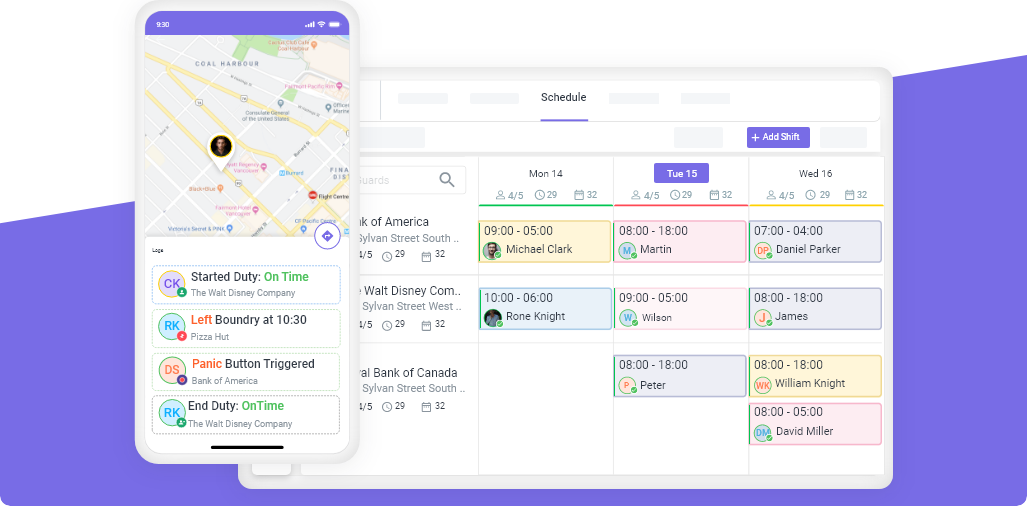Overwhelming Benefits of Smart Workforce Management
Mon, Dec 25, 2023
Read in 4 minutes
In today's fast-paced business world, staying ahead of the curve requires agility, efficiency, and a happy, engaged workforce. That's where smart workforce management comes in, a secret weapon transforming businesses big and small. But what exactly are these "overwhelming benefits" they whisper about?

Boosting Productivity and Efficiency:
1. Streamlined Scheduling and Time Management:
Smart workforce management systems revolutionize scheduling and time management. Automated scheduling tools ensure optimal resource allocation, minimizing conflicts and reducing downtime. By analyzing data on employee availability and workload, these systems optimize resource allocation, minimizing idle time and maximizing productivity. By streamlining these processes, organizations can enhance productivity and achieve operational efficiency.
2. Enhanced Employee Engagement and Motivation:
Engaged employees are more productive and motivated. Smart workforce management fosters engagement by providing employees with tools for transparent communication, recognition, and collaboration. This sense of involvement contributes to a positive work environment, increasing overall productivity.
3. Improved Communication and Collaboration:
Effective communication and collaboration are the cornerstones of a successful workplace. Smart workforce management tools facilitate seamless communication, breaking down silos and fostering collaboration. This ensures that teams are well-connected, leading to improved efficiency in project execution.
4. Reduced Administrative Burden and Paperwork:
Automation in workforce management significantly reduces administrative tasks and paperwork. From attendance tracking to leave requests, automation streamlines these processes, allowing HR teams to focus on strategic initiatives rather than being bogged down by routine administrative tasks.
Empowering Your Workforce:
1. Real-Time Feedback and Performance Insights:
Real-time feedback mechanisms empower employees to understand their performance promptly. Instant messaging and real-time updates ensure that teams are well-informed, promoting collaboration and reducing delays in project execution. By providing instant insights, smart workforce management facilitates continuous improvement. Helping employees align their efforts with organizational goals.
2. Increased Skill Development and Training Opportunities:
Smart workforce management systems identify skill gaps and training needs within the organization. This enables the implementation of targeted training programs, fostering skill development and ensuring that the workforce stays abreast of industry trends. Performance analytics provide valuable data on employee strengths and areas for improvement, enabling targeted coaching and development.
3. Improved Job Satisfaction and Morale:
When employees feel supported, engaged, and empowered, job satisfaction and morale soar. Smart workforce management contributes to employee satisfaction by addressing their needs and creating a positive work culture. Based on skill assessments, organizations can implement personalized training programs. Ensuring employees receive the right training at the right time. A positive work culture, facilitated by smart workforce management practices, contributes to employee morale and satisfaction.
4. Greater Job Ownership and Accountability:
Empowered employees take greater ownership of their roles and responsibilities. Through clear expectations, transparent communication, and performance tracking, smart workforce management cultivates a sense of accountability among the workforce. Efficient scheduling and workload management contribute to a healthier work-life balance, enhancing job satisfaction.
Maximizing Business Outcomes:
1. Reduced Costs and Increased Profitability:
Efficient workforce management directly impacts the bottom line. By optimizing resource allocation, minimizing overtime costs, and reducing inefficiencies, organizations can realize significant cost savings and increased profitability. Real-time performance metrics and feedback create a culture of accountability, where employees are aware of their impact on organizational goals.
2. Improved Customer Satisfaction and Retention:
A satisfied and engaged workforce translates to improved customer experiences. Employee satisfaction radiates to customer interactions, positively impacting service quality and customer satisfaction. Satisfied customers are more likely to remain loyal to your brand. Satisfied and engaged employees create positive interactions with customers, enhancing the overall customer experience.
3. Enhanced Risk Management and Compliance:
Smart workforce management systems aid in compliance with labor laws, industry regulations, and internal policies. This reduces the risk of legal issues and ensures that the organization operates within the bounds of regulatory requirements. Adherence to data security standards ensures that sensitive employee information is handled securely, mitigating risks associated with data breaches.
4. Stronger Competitive Advantage and Market Differentiation:
A well-managed, engaged, and efficient workforce provides a powerful competitive advantage. Organizations that invest in smart workforce management stand out in the market, attracting top talent, and positioning themselves as leaders in their industry. An empowered workforce is more innovative and agile, allowing organizations to adapt quickly to market changes. Organizations that prioritize employee empowerment and efficient workforce management build a positive brand image, differentiating themselves in the market.
Conclusion
In summary, smart workforce management is a holistic approach that not only streamlines operational processes but also empowers employees and contributes to the overall success of an organization. By focusing on productivity, empowerment, and strategic business outcomes, organizations can leverage these systems to thrive in a competitive business environment.
Get a Free Trial
Sign up For Newsletter
Latest Blog Posts
Get Started
Start being productive & grow your business
with Novagems




